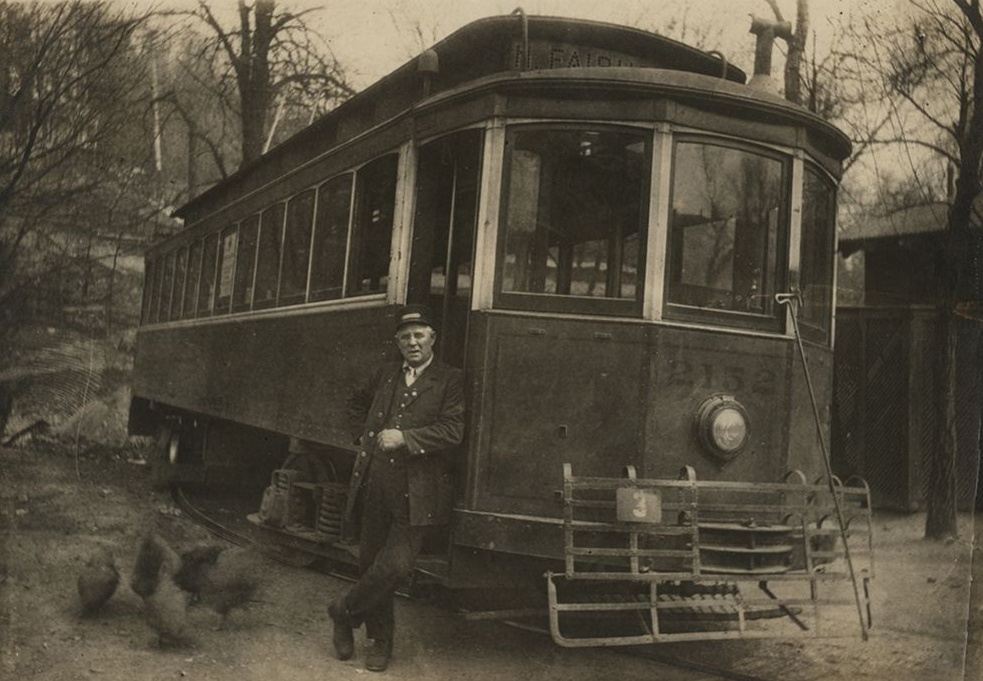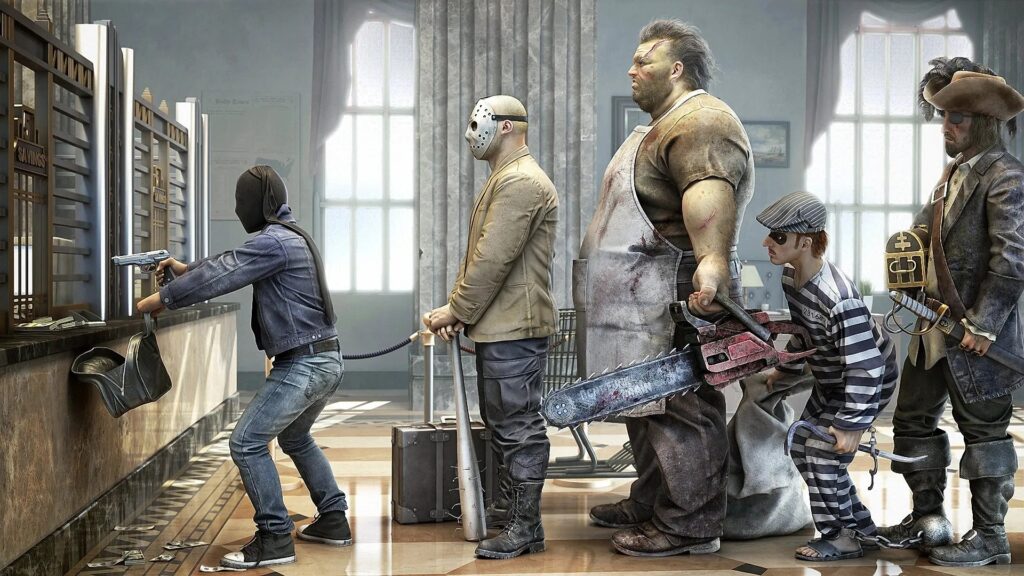According to some people, there was a serial killer operating in the Cumminsville area of Cincinnati in the early 1900s. Other people want to think it was the work of multiple killers. Either way, at the time the place was known as The Cumminsville Murder Zone – and it might not have been such a great place for young ladies.
1904
On Monday, May 2, 1904, several newspapers reported on the murder of a lady named Mary McDonald, whose parents lived in Saginaw, Michigan, although she resided in the Cincinnati area. The press called the crime “foul and brutal”. The murder had taken place in a lonely railyard, in the dark of night.
At first, the police believed there might have been two possible motives for the crime. Shortly before her death, she was seen to be in the possession of a small sum of money which had gone missing by the time her remains had been found. The other possible motive, the one the police at the time said was the most likely, was that she was killed over petty jealousy. Someone, they thought, wanted to hurt the woman’s fiancé and what better way to do that than to rob him of the woman he loves.
Several months later, and very close by, the body of Lulu Mueller was discovered near one of the local “Lover’s Lanes”. She, too, had been brutally and viciously attacked and left for dead. At just eighteen years old, she was known to have had several “partners” all of whom were, for a short time, considered suspects. It was also believed that her death might have been an accident, if she had stumbled drunkenly onto the nearby railroad tracks, she might have been struck by a train. The problem with all this was that there was absolutely no evidence for any of it.
Just like Mary McDonald’s murder earlier in the year, police seemed to run out of leads and her name faded from the local press.
Barely a month later, Alma Steinigewig, a well-liked and respected telephone operator and active member of her Episcopal church was found dead in the same corner of the city. She was attacked from behind by a large man who then dragged her body into a nearby field. Her body had been viciously beaten, just as McDonald and Mueller had earlier that year.
In the weeks following, police had exhausted what few leads they had and just like the others before, her name was about to fade from public consciousness, although she had one ally the others did not: the phone company. Bell Telephone offered a thousand-dollar reward for anyone who provided enough information to catch their beloved operator’s killer. Sadly, no good deed goes unpunished because after this, everyone and their uncle called to report seeing human monsters lurking in the shadows all over the area.
It is hard to tell if this sudden influx of attention did any good, or any harm. So far, the local police weren’t having all that much success to begin with. Either way, the mystery remained unsolved.
Cumminsville, Ohio
Today, South Cumminsville is one of Cincinnati’s 52 Neighborhoods, with a population just over 700 according to the last recorded census, however in the early 1900s, it was one of the more predominate communities.
The community of Cumminsville, located at the time a very short distance northwest of Cincinnati, was established in 1865. However, as Cincinnati at the time was growing at such a rapid pace, it would be incorporated into the city eight years later. The area proved to be a popular residence for two demographics: mostly German Catholics, but several smaller African-American communities took up residence there as well.
While some people did find this area irresistible, it was actually a non-human entity that really put this place on the map. By that I mean … the railroad.
By the turn of the century, there were four major railroad companies operating in Ohio, and they all decided to put a major hub in Cumminsville. All roads may lead to Rome, but all trains led to Cumminsville.
More modern investigations into these murders seem to capitalize on this fact. In some cases, the blame is clearly put directly on the railroads. Some wanted to put railroad workers on the list of suspects, as they were often on the polar opposite side of the spectrum against the elite, polite society of city life. Railroad workers were often the kind of person who would work seven day weeks, spend the evening at the local tavern, and weren’t likely to join The Local Country Club.
Other modern takes like to point out that the railroads also provided any potential killer with a “Get Out of Town Quick” escape plan. One could easily kill someone, then jump on a train headed to any one of the 45 or 46 States (depending on what year it was) before the victim had even been found.
In my experience, I have a problem with both of these “theories”. Are they possible, well, yeah – since these murders are unsolved, anything is possible. But is it likely? Probbly not.
The Serial Killer Theory
Today, when we use a term like “Serial Killer” we have at least a basic idea of what we’re talking about. That’s because in the mid-1970s, a guy named Robert Ressler, then head of the FBI’s Behavioral Science Unit came up with it to describe a certain breed of killer. He, and several of his collogues were conducting research into why people kill, thinking that the more we understood the crimes, the easier it would be to catch the killers.
The team from the FBI studied modern serial killers because there were so many of them still alive and spending the rest of their lives behind bars, which made them a lot easier to interview and study. Physical evidence still existed from these cases, and the crimes were still fresh in the memories of witnesses.
Some of them have tried to apply a version of their techniques to more historic cases, but that often ends in disaster. “Jack the Ripper” was a common target of these profilers, which perfectly demonstrates the problems. Most of how we see these crimes have been re-shaped over the years with various telling and interpretations of the crimes. While we do have some physical evidence, by now they are all taken out of context and therefore aren’t all that reliable. John Douglas, who was part of Ressler’s team, has commented several times on Jack the Ripper, coming up with different “profiles” all depending on current thought trends.
For those reasons, trying to put these killings into the framework of a Serial Killer can be somewhat of a folly. Today, we can look at the evidence, or at least what was recorded, and we can notice certain similarities between the cases, including several things that were a bit unique when compared to other similar murders that occurred in the Cincinnati area and elsewhere.
For example, for all three of these cases, the level of violence was uniquely high. This seems to be part of the reason that some people believe that all three killings were the work of a single killer. Also, all three killings happened within a mile or so of each other, which we now believe is a common trait among serial killers.
Having said that, all things considered, I am somewhat (but not totally) convinced that all three of these murders were likely committed by the same person. Part of the reason for that is a few women who weren’t killed.
The Ones That Got Away
Early in the year (1904) two men made a gruesome discovery along a set of Cumminsville railroad tracks: a young woman, severely beaten and bloody, and barely clinging to life. She would soon be identified as the daughter of a well-known gardener. Due to the family’s affluence, her name and the details of her attack were kept out of the newspapers. She was able to give a vague description of her attacker, although she couldn’t be certain of some details and did suffer from some memory loss. Her assault was kept from the public record until the murder of Alma Steinigewig made that all but impossible.
On November 6, Harry Winnes decided he needed to head out and visit the local pharmacy in the late evening to pick up some medications. For some reason, however, he changed his mind. It was a good thing he did, though, as once he had walked in the front door, he heard his wife scream from the back yard as she was being attacked. Hearing Harry return home, the man fled. Harry chased him into the darkness, firing a few shotgun shots in the assailant’s direction but the man ultimately eluded him.
A few hours before the Alma Steinigewig murder, a young woman named Dorothy (who just happened to be the daughter of Samuel Hannaford, the architect of Cincinnati’s CIty and Music Hall) was waiting for a streetcar after a meeting at the Young Women’s Christian Association when she was grabbed by the arm as her assailant tried to force her behind some nearby bushes. She screamed, alerting people nearby of danger. Luckily for her, the streetcar came at just the right moment, and her attacker ran off. She suffered no bruises but was “taken ill” and placed in the hospital for some rest.
Over the next few days there were a few further attacks on young ladies (or small groups of ladies) where the would-be victims either fought off the attacker or were saved by a stroke of luck.
But then … just as mysteriously as they started … the attacks came to an end. Or did they?
1909 – A Few Years Later
On New Year’s Eve, 1909, the remains of a 36-year-old secretary named Anna Lloyd was found along the railroad tracks. Once the police started looking into it, they immediately started to see a familiar pattern. Anna was initially attacked in the vicinity of a streetcar stop and dragged into some nearby bushes. Her pocketbook was found some distance away from the abduction site or where the body was found and all the cash it was believed to have contained was missing. It had been quite some time since this pattern had been spotted, but everyone seemed to know that the Cumminsville attacker was back.
Many in the Cincinnati community wasn’t very pleased with law enforcement at this point. Crime in Cumminsville was higher than in other parts of town, but now the police began to be the focus of citizens who were outraged that they were unable to nab the man who had attacked or killed several women a few years before.
The city council of Cincinnati authorized a $2500 reward for anyone who gave information leading to the criminal’s arrest. The lumber company where Anna Lloyd worked came up with an additional $5000.
The following October, Mary Hackney was discovered dead in the boarding house she ran with her husband. She had multiple wounds, apparently from an axe, which was left at the scene, as well as a bloody thumbprint. The police did interview neighbors, a few of which said they did see a man in the vicinity who fit the description of the Cumminsville Killer who had already taken four young ladies’ lives. The police did drain the nearby canal, thinking it was possible that it may have contained something which would lead to the identity of the killer. Soiler alert – it did not.
Clues and Suspects
To this day, over a century later, police (and for that matter, everyone else) has no idea who the Cumminsville Killer was. Then again, we can’t exactly agree on what to call him, so there’s that, too. Some call him the Cumminsville Killer, others the Cumminsville Ripper or “Cincinnati’s Jack the Ripper”. He has been referred to as The Slouch Hat Killer (because many witnesses and a few of the victims that lived claimed he wore that style of hat). “Man Gorilla” was also used in a few newspapers.
Whatever we wanted to call him, one big thing remains unknown – his real name.
One witness to any crime will most always give a slightly different description of the assailant than the next witness, and this goes for various details of the crime as well. This, and practically every other crime, is a perfect example of this. Some of the witnesses (and survivors) described the killer as a black make, while others claimed he was Caucasian with a suntan, and a couple even said the guy was of a rather pale complexion. So, we’re not even totally sure what race the man was.
Most reports at the time claimed the criminal was black skinned. Whether this was the case, or whether he was a victim of racial tensions that were plaguing the area at the time is not clear. At various points in this story, Cumminsville nearly erupted in race riots.
On Jan 10, 1910, the police received a letter from someone calling themselves “S. D. M.” who claimed to have witnessed Anna Lloyd’s murder. It took a few days for the police to find the one responsible for the letter, but once they did, they were quick to realize the whole thing was a hoax.
Shortly after the Anna Floyd murder, an unknown black man in Ford, Kentucky appeared on the doorstep of a resident named David Taliaferro. He brandished a large, bloody knife and screaming that he had killed Floyd. Taliaferro telephoned the police and soon a large posse gathered to try and hunt the man down. It is unclear if they ever found this man, or what happened to him. The recorded history about this seems to stop here.
Two white men were arrested for at least one of the murders. A 34-year-old butcher named Henry Cook was arrested after he was identified by two girls as being one of the men they saw running away after Anna Lloyd’s murder. He spent a few nights in jail before finally being released, presumably due to the lack of any substantial evidence.
A 21-year-old was arrested in Wyoming, Ohio on suspicion of the murder of Anna Lloyd. He was initially reluctant to give any verifiable information about his whereabouts on the night of her death, but detectives soon learned the man had been in prison that night, so they let him go.
At about the same time as Cook was being held, so was a young black man named James Fields. Police could find no connection between him and Cook, and as everyone at that time was thinking it was a white skinned killer they were after, Fields was let go.
One of initial suspects in the murder of Mary Hackney was her husband, Harley. I would say that anyone who has ever read an Agatha Christie mystery is always going to suspect the husband, but she wouldn’t write her first novel for another decade or so, so forget I said that. Maybe the police found it strange that he left the house for a late-night trip to the local pharmacy, but back in those days that kind of thing was not out of the realm of possibility. Harley was also in the process of accepting a new job in Alabama, leading police to the lazy theory that if Mary didn’t want to go, he killed her to avoid complications, then have the perfect getaway excuse. To prevent him from leaving, he was issued a subpoena to testify about his wife’s murder.
Harkey had returned home around the same time as one of their boarders, Charles Eckert, to discover Mary’s attacker fleeing in the night. If police really wanted to consider the husband as a viable suspect, then they had to consider Eckert as one too, so he got himself arrested as well.
As some of the witnesses claimed a black man was either responsible or involved, the police went looking for one of them, too. They found it in a milk float driver named Herman Schwering who happened to be somewhere in the area that night.
At the inquest, charges were discussed for the three gentlemen, but none were filed citing a complete lack of any evidence against them.
Another black man, RIchard Finney, was also arrested shortly after this inquest, but the lack of surviving documents suggest that he too was quickly released, probably due to the lack of any evidence against him.
Let’s Do The Time Warp Again
One of the unexplained aspects of this case is why the killer attacked several women around 1904, then stopped, only to start again around 1910, then vanish forever.
One possible theory is that the killer was incarcerated between those years, perhaps arrested on a charge not relating to murder, serving time between 1904 and 1910, only to be released and then started killing again. Perhaps, he was either arrested again or was killed bringing his murderous spree to a final conclusion.
Authorities and historians have looked into this theory, but have yet to come up with any viable suspects based on available records.
Another possibility is that, rather than being incarcerated, the man had moved somewhere else. Cumminsville was a major passenger railroad hub, so the idea that he could have jumped on a train headed anywhere else was viable.
According to at least one theory, that’s exactly what this killer did. But, to find out about that, you’ll have to check out (The Dayton Strangler)
A Note About Geography
In the early 1900s, one of Cincinnati’s neighborhoods was Cumminsville. Since then, there’s been a slight change in geography. South Cumminsville still exists, consisting of most of the south end of what was then Cumminsville. The rest of Cumminsville makes up the bulk of the Northside neighborhood.




Pingback: The Dayton Strangler - The Ohio Project